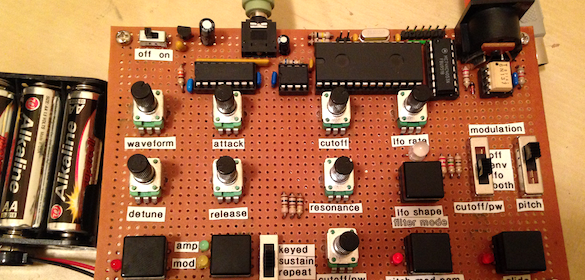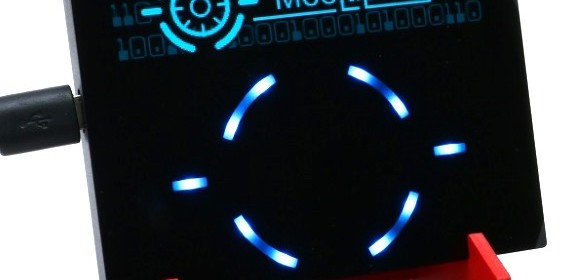LPC1114 controlled Midi Synthesizer

Matt Sarnoff built this digital monophonic synthesizer using the NXP LPC1114FN28 ARM Cortex-M0 microcontroller and MCP4921 SPI DAC. It is a midi synthesizer with following features: 4 oscillators; sawtooth or pulse with adjustable duty cycle with coarse and fine tuning 2-pole (“Chamberlin”) state-variable filter with lowpass, highpass, and bandpass modes Attack-release envelopes for amplitude and modulation Low-frequency oscillator with four shapes (triangle, ramp, square, random) LFO and/or modulation envelope can affect filter cutoff frequency, pitch, and pulse width Keyboard tracking for filter cutoff frequency Glide with 3 different rate presets MIDI input; monophonic with last-note priority 250kHz, 12-bit output Powered by 3 AA
Read more


